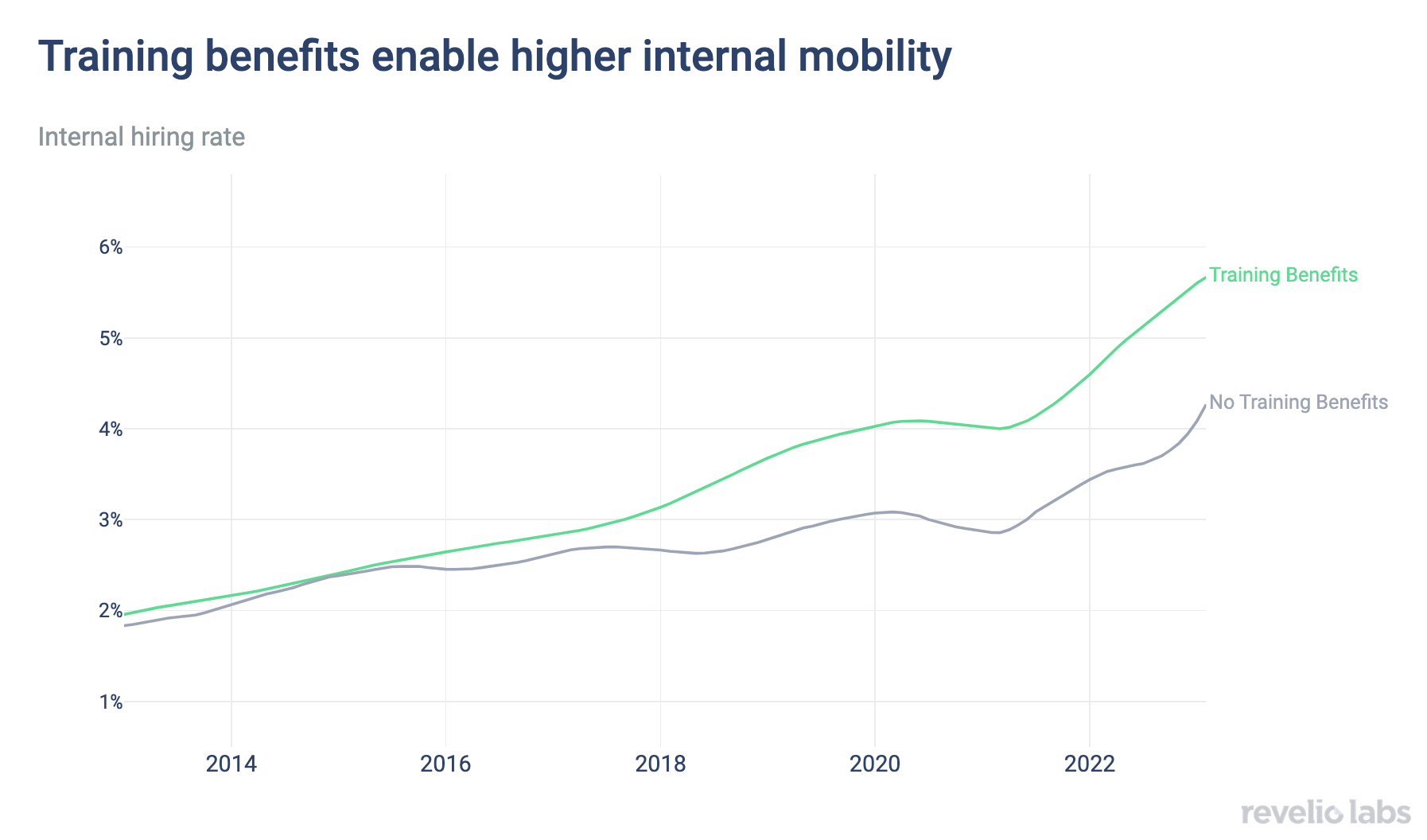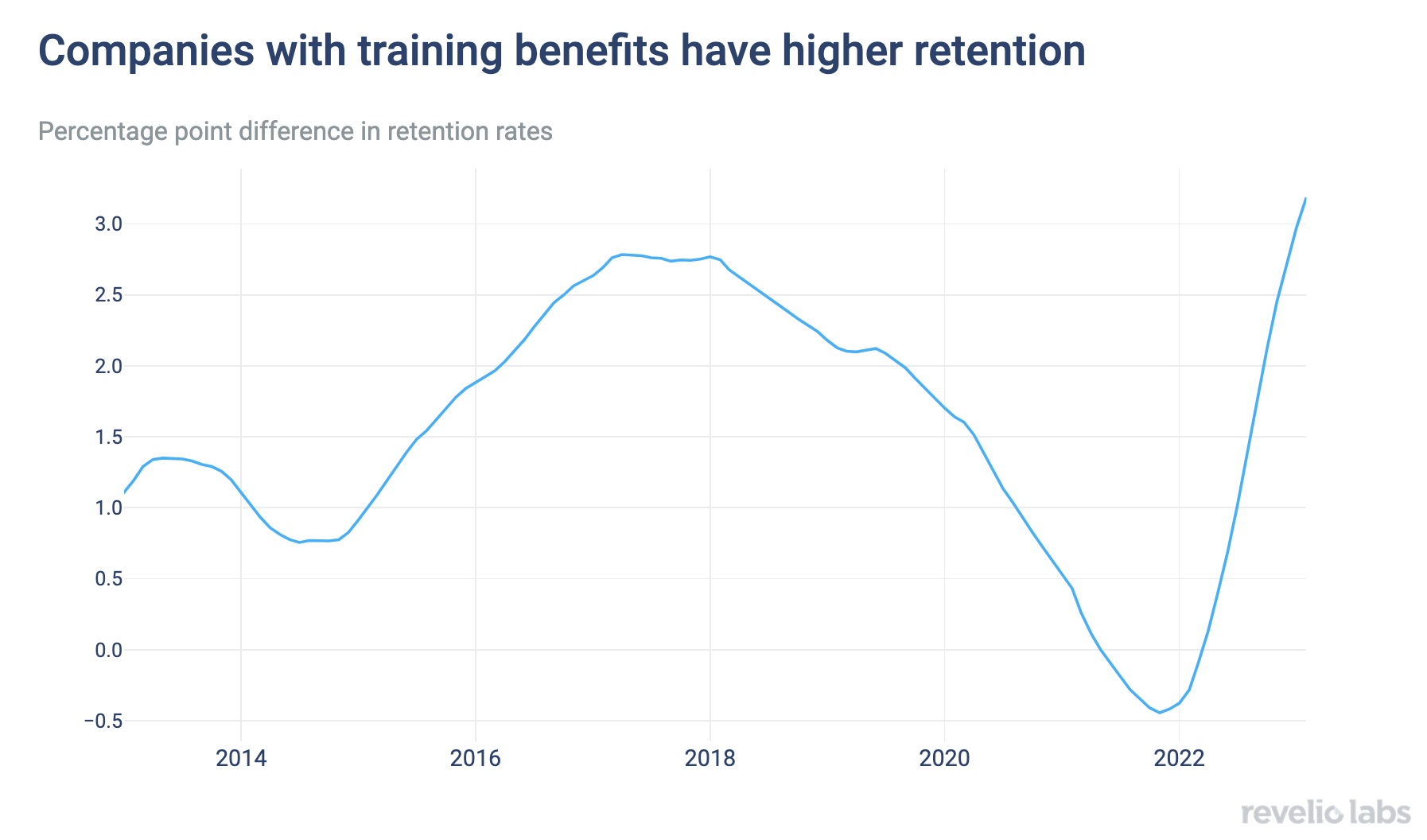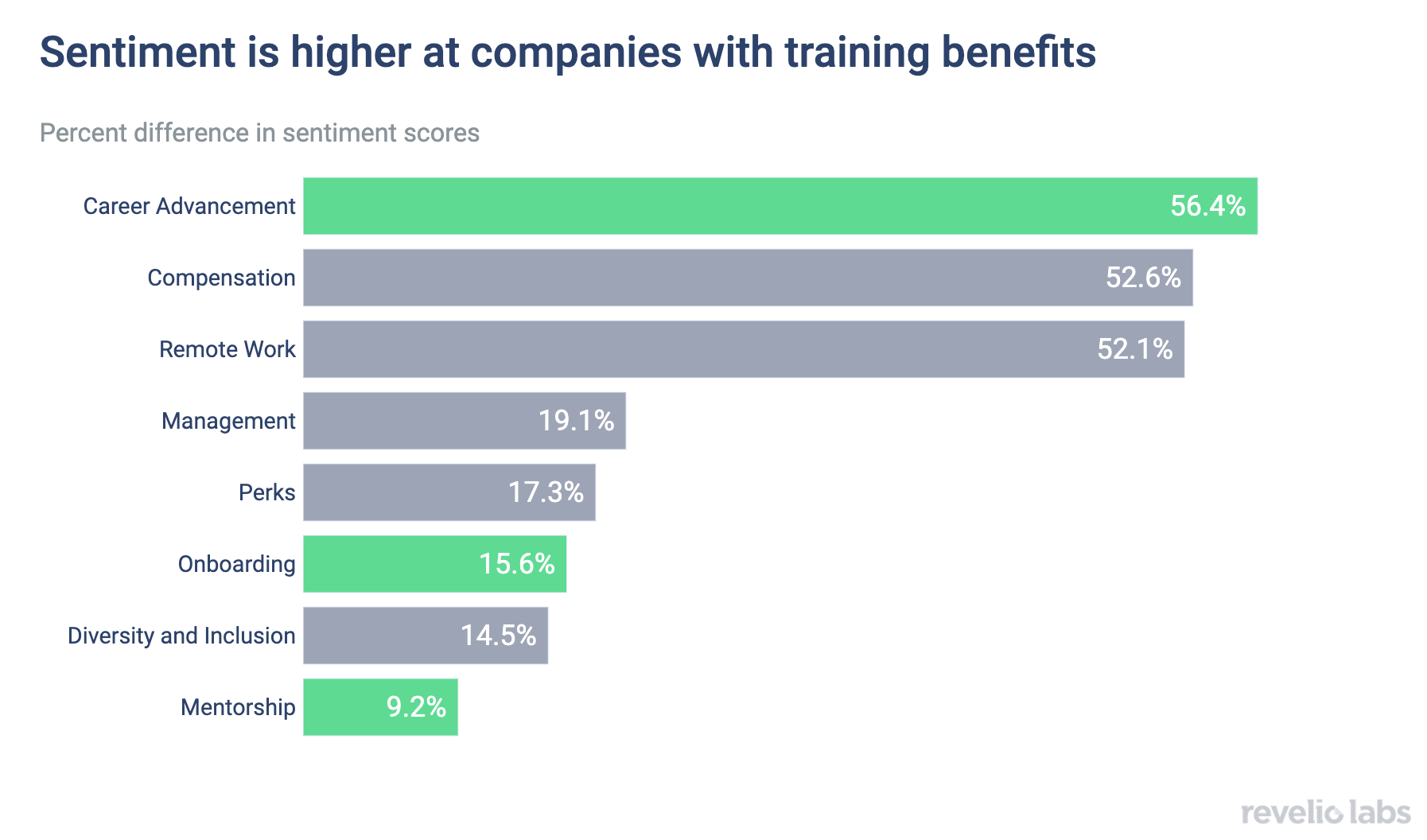When It Comes to Benefits, Retraining is Retaining
Here are the fastest-growing benefits, and how they can help with your talent strategy

Education and training benefits have been among the fastest-growing employee perks over the last year.
Companies offering these benefits have higher rates of internal mobility and higher rates of retention.
Employees receiving these benefits tend to be more satisfied with career advancement and mentorship opportunities at their companies.
Hiring remains hard and expensive, despite tech layoffs and a slight cooling in the labor market overall. This fact, in combination with increased pressures to cut costs, has led many companies to hinge their workforce planning strategies upon talent retention and internal talent mobility. In such an environment, understanding which benefits can help companies retain talent is key.
We look at the benefits whose popularity grew the most in 2022, to find out how companies have been enticing workers to stay. As it turns out, gone are the days of ping-pong tables and kombucha on tap; instead, education and training-related benefits, such as internal seminars and courses, are among the fastest-growing perks over the last year. Companies are keen on enabling employees to develop their skills in ways that further both personal and company goals.


Sign up for our newsletter
Our weekly data driven newsletter provides in-depth analysis of workforce trends and news, delivered straight to your inbox!
Training benefits enable employees to learn new skills and advance their careers within the company, be it through lateral or vertical movements. Revelio Labs finds that companies that have added training benefits in the last year have higher internal mobility rates, meaning they fill more positions using internal talent and promote more from within. That said, these companies were already seeing higher internal mobility for several years. Still, the new benefits likely contributed to the continued rise in internal mobility.


Perhaps because of this, training benefits significantly improve worker retention. Below we plot the difference in retention rates between companies with new training benefits and those without such benefits. Companies with recently introduced training benefits have been a lot more successful in retaining their talent over the Great Resignation in the past year.


The widening gap in retention between companies with and without training benefits may be striking at first, but it makes more sense in light of the labor market conditions of the past year. In an environment where workers have the opportunity to change jobs easily, companies can greatly increase their desirability by sending a meaningful signal that they value their employees and want to invest in them for their long-term workforce planning.
To further understand what employees value about training benefits, we look at the topics that come up most frequently in employees’ company reviews. Career advancement is mentioned 56% more frequently as a pro at companies with training benefits than at companies without such benefits. Likewise, there are many more positive mentions of onboarding and mentorship at these companies, our data show.



